West Virginia Mine Wars Museum
Introduction
Text-to-speech Audio
Located in the former Chambers Hardware store in Matewan, the back wall of the West Virginia Mine Wars Museum still bears bullet holes from the legendary conflict it represents. While the Matewan Massacre shootout itself was only one occurrence in a massive chain of labor strikes, killings and political machinations, it helped touch off a catastrophic series of events that culminated in the assassination of Sheriff Sid Hatfield (of Hatfield and McCoy fame) and the infamous Battle of Blair Mountain--where 10,000 armed miners fought for several days against several thousand deputies and private coal company militiamen. The museum commemorates these events and explores them from the perspective of the common coal miner.
Images
Fred Mooney and Frank Keeney (right), key union organizers during the Mine Wars.
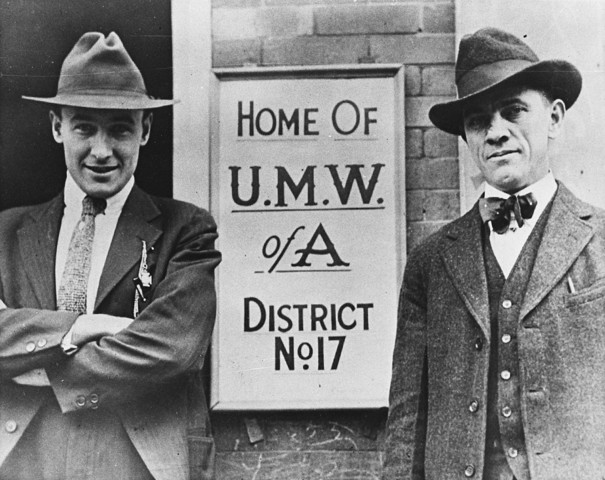
Artifacts on display at the museum.
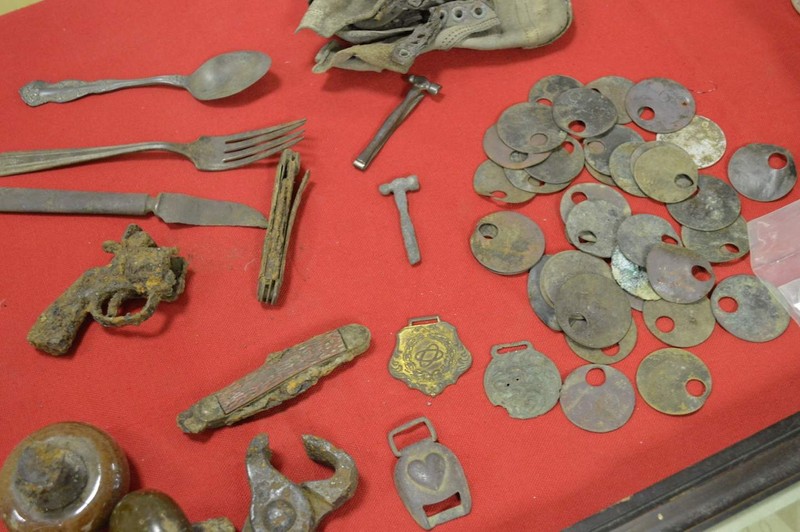
Miners' family in a tent colony, 1920.
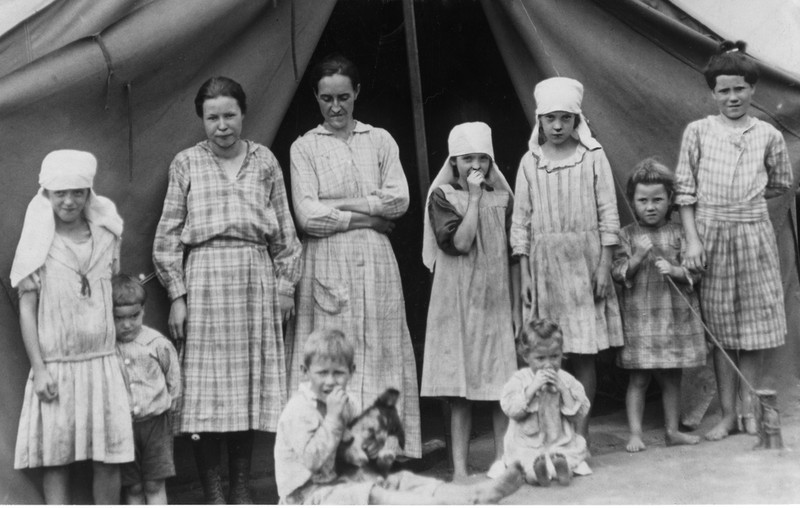
Blair fighters turning in their guns.
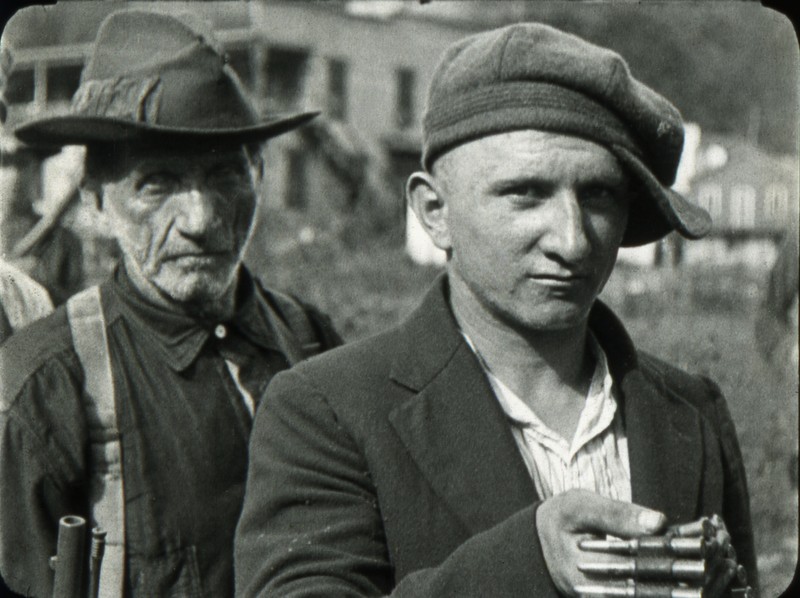
Mother Jones (far right) assisting miners' children. Jones was a prominent union organizer of her day, and a key figure in the strikes that led to the Mine Wars.
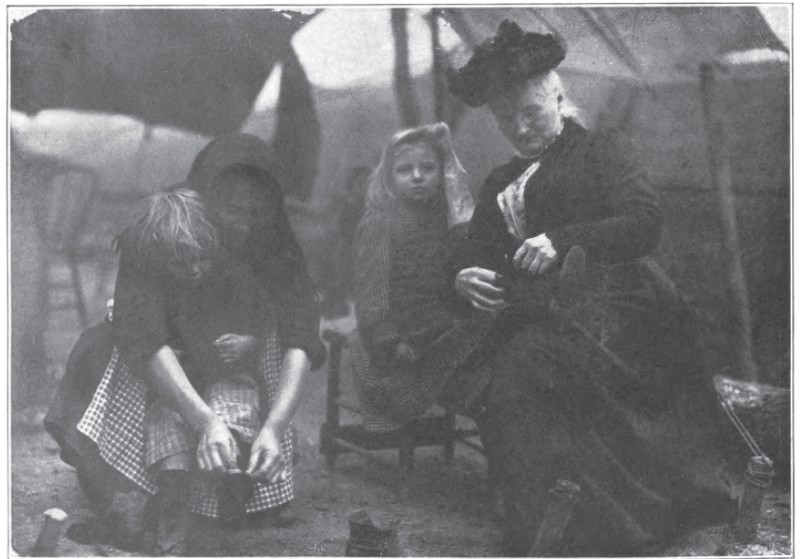
Fred Mooney and Frank Keeney (right), key union organizers during the Mine Wars.

Artifacts on display at the museum.

Miners' family in a tent colony, 1920.

Blair fighters turning in their guns.

Mother Jones assisting miners' children. Jones was a prominent union organizer of her day, and a key figure in the strikes that led to the Mine Wars.

Backstory and Context
Text-to-speech Audio
“There’s not a whole lot of emphasis on the history of what coal miners did and the struggles they went through and the tumultuous time. The Battle of Matewan has all the elements of a classic Western shootout, yet while something like the Gunfight at O.K. Corral has become a part of American lore, Matewan has languished in obscurity for a number of generations.”1
The West Virginia Mine Wars began in 1912 when unionized coal miners went on strike along Paint Creek and Cabin Creek in Kanawha County. Organized by the United Mine Workers of America, one of the largest workers' rights organization in the country which at that time was only twenty-two years old, the strike was intended to win higher compensation for the miners' dangerous work. Coal companies cried foul and brought in strikebreakers and deputized private detectives armed with machine guns to quash the dissidents. The miners responded by arming themselves and fighting back, and though martial law was declared in the district several times, by the time the strike ended the following year, it was well known around the nation as one of the bloodiest labor conflicts in American history. The UMWA’s most famous organizer, Mary “Mother” Jones, was among the leaders of the strike and witnessed the violence. Speaking around the country, she would recall snow stained with blood and miners’ families shivering in tent colonies through the winter. She told audiences, “When I get to the other side, I shall tell God Almighty about West Virginia!”2
But these union victories in West Virginia during the 1910s led the coal operators to fight back. By the 1920s, coal fields in Mingo and Logan counties had unionized--so coal operators in Mingo county hired the Baldwin-Felts agency to evict union coal miners and their families from their camps. Since miners were paid in company scrip which had no value outside their own coal camps, this would have rendered the affected families penniless and homeless.
The evictions climaxed in a shootout between Mingo County Sheriff Sid Hatfield and his deputies--backed by miners--and the evicting Baldwin-Felts detective agents on the railroad tracks in Mingo county on May 19, 1920. Though murder charges against Sheriff Hatfield were dismissed,he was later killed by Baldwin-Felts agents as he climbed the steps of the McDowell County Courthouse. Galvanized by this injustice, miners gathered to fight back.
"It was a literal war that was being fought and many of the miners stuck to a code of silence about their goings on, about the specifics of what happened, largely because they could have all been prosecuted for various crimes, everything from insurrection to murder to treason. There’s not as an extensive written record of the events that you might have, say, for the Battle of Gettysburg, where one can look at letters, diaries and official communications back and forth.”1
A year after the Matewan shootout, tensions between miners and coal companies climaxed at the Battle of Blair Mountain took place between August 25, 1921 and September 2, 1921. Fought between unionized miners and some three thousand deputies, National Guardsmen, and Baldwin-Felts agents, this battle was the largest labor uprising in United States history and one of the largest, best-organized, and well-armed uprisings since the American Civil War. Over a million rounds of ammunition were fired, and coal company forces hired private planes to drop bombs on the miners.
The battle ended when the U.S. Army arrived and the laborers surrendered. Dozens of people died in these conflicts over basic civil liberties, the right to form unions, and the right to a decent wage and a life of dignity.2
The West Virginia Mine Wars Museum gives the spotlight to the laborers and tells history through their perspective. The museum also has Matewan Massacre Drama performances on certain days of the year. By exhibiting these events within the historic Chambers Hardware Store on the streets of Matewan, where some of the pivotal moments of the Mine Wars took place, the museum vividly depicts the struggle experienced by so many thousands of miners during this tumultuous era. The Museum has also designed traveling exhibits to better share this uniquely important history wherever possible.
The site of the Blair Mountain Battlefield was added to the National Register of Historic Places in 2009, but its preservation is still threatened by current mining operations.6
Cite This Entry
Warmack, Kyle, Hailey Horn on behalf of Preservation Alliance of West Virginia, and Clio Admin. "West Virginia Mine Wars Museum." Clio: Your Guide to History. August 17, 2021. Accessed April 8, 2025. https://theclio.com/tour/1098/2/reverse
Sources
1. The Washington Times. “West Virginia Mine Wars Museum Set to Open in Matewan.” 2016. Accessed September 19, 2016. http://www.washingtontimes.com/news/2015/apr/30/west-Virginia-mine-wars-museum-set-to-open-in-mate/.
2. “Chapter XXVI - Medieval West Virginia.” The Autobiography of Mother Jones, Charles H. Kerr & Company, 1925, digital.library.upenn.edu/women/jones/autobiography/autobiography.html
3. Tabler, Dave. “WV Mine Wars Museum to Open May 16.” April 6, 2015. Accessed September 19, 2016. http://www.appalachianhistory.net/2015/04/wv-mine-wars-museum-to-open-may-16.html.
4. “About the Museum.” 2015. Accessed September 19, 2016. http://www.wvminewars.com/about/.
5. Shogan, Robert. The Battle of Blair Mountain: The Story of America's Largest Labor Uprising. Boulder, CO: Perseus Books Group, 2004.
6. Karen, Carper. SPRING 2009: Blair Mountain Added to National Register of Historic Places!. Preservation Alliance of West Virginia. March 30, 2009. Accessed August 31, 2017. http://www.pawv.org/news/blair.htm.
7. December 11, 1921. Accessed August 31, 2017. http://www.wvculture.org/HiStory/labor/mw25.jpg. Photograph of Miners with Bomb.

